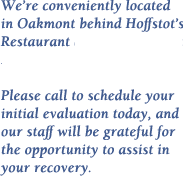What is Arthritis?
Arthritis is a disease that can cause pain, stiffness and swelling in or around your joints. Pain from arthritis can be constant or it can come and go. It may occur when you are moving or after you have been still for some time. Your joints may feel stiff and be hard to move. You may find that it is hard to do daily tasks that you used to do easily, such as walking, bathing, dressing, stair climbing or household chores. Pain and stiffness will usually be worse in the morning and after periods of inactivity. For many people, arthritis may not go away, but there are things you can do now to avoid arthritis, reduce pain and keep moving.
How is Arthritis Treated?
There is no cure for arthritis, but there are many things you can do to feel better and stop the pain and swelling in your joints.
1) Use heat and cold: Heat helps to relax aching muscles. Cold numbs the area so you don’t feel as much pain, and can decrease swelling and inflammation. It is important to use heat and cold safely. Do not use either treatment for more than 20 minutes at a time. Do not use heat with rubs or creams because this can cause skin burns.
2) Protect your joints: You can learn to protect your joints by using them in ways to avoid excess stress. You may need to wear a brace or use an assistive device such as a cane, crutch or walker to decrease pressure on a specific joint.
3) Weight Control: It is extremely important to stay at or near your recommended weight especially as you get older. Eating a healthy diet and exercising regularly can reduce your risk of developing osteoarthritis, the most common form of arthritis.
4) Exercise: Regular exercise is important to keep you moving and independent. Exercise helps to lessen pain, increase movement, reduce fatigue and prevent weight gain. Physical therapists can assist you in designing an exercises program that will improve mobility, flexibility and increase strength of muscles in order to minimize joint stress.
Heather Torris, DPT, ATC
Oakmont Orthopaedic & Sports Physical Therapy Center
Member of the American Physical Therapy Association
This article is protected by copyright and may not be reproduced online or in print without prior written consent. If you would like to reproduce this article, you must first contact us to obtain permission.


